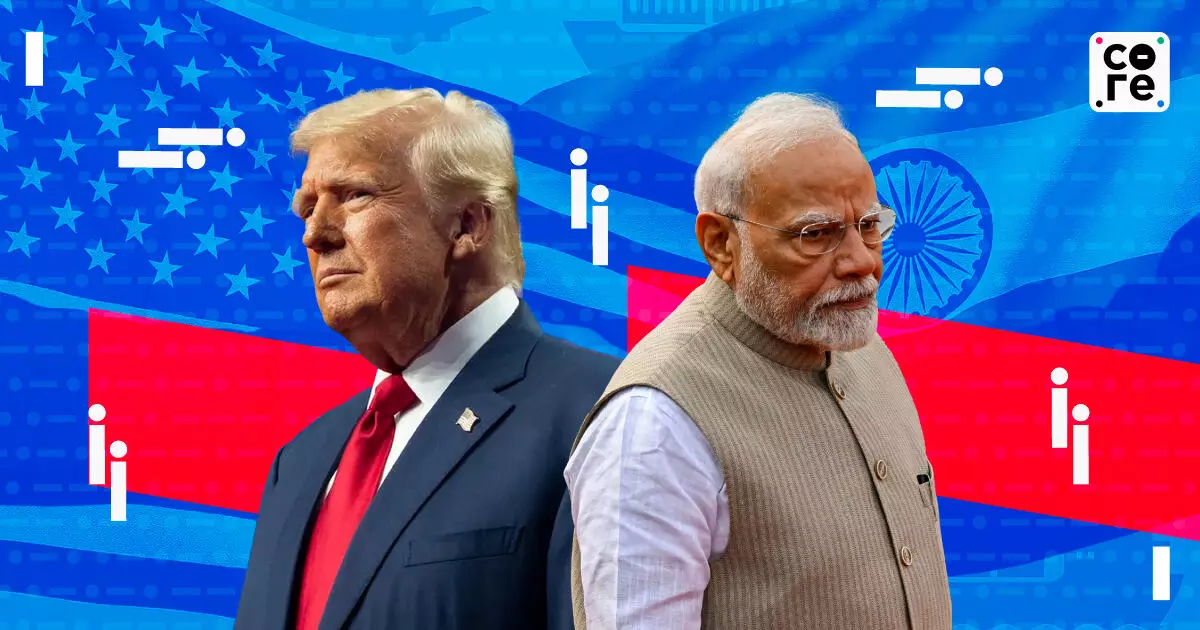
Tariff Trouble: How Much Can India Concede If Trade Talks Resume?
As India and the US negotiate on sectors such as agriculture, India must leverage its strengths and aim for the lowest possible tariff.

The Gist
India faces a 25% tariff from the US, but upcoming trade negotiations could offer some hope amidst challenges.
- Experts believe India has limited room for negotiation, particularly regarding agricultural market access.
- The US seeks to sell genetically modified soybeans to India, which India refuses to allow for farmer protection.
- Despite short-term setbacks, India holds strategic leverage due to its trade surplus and lack of dependency on US military support.
While India has been slapped with 25% tariffs by the US, a glimmer of hope arises from another round of trade negotiations in the third week of August. Amidst the confusion, political and economic experts are of the opinion that India has little headroom to haggle.
The US wants India to open its agricultural market and sell its genetically modified (GM) foods, particularly soy beans. India refuses as they want to protect the interest of their farmers, and also does not allow GM foods. The US appears to have a similar issue — appeasing the large base of middle-American farmers.
“Soy is an interesting story. Soy farmers are actually a big (Donald) Trump voting base. America's soy exports used to go to China. From 2024, China soy imports started to dip fairly heavily, as they shifted to Brazil and Argentina. There is no other big large market in this world that leaves us. We will not take soy because it's genetically modified. That's where we are,” explained Indrani Bagchi, CEO of Ananta Aspen Centre and foreign affairs columnist.
How much must India concede to obtain a tariff rate better than its Asian counterparts? Vietnam, for example, which competes with India in electronics amongst others, has a better tariff at 20%.
“My hypothesis is that we have agreed to open the industrial products, which account for 95% of US exports to India, but the US is not happy. They want the balance 5% and most of it is a red line for us,” said Ajay Srivastava, former trade negotiator and founder of the Global Trade Research Institute (GTRI), referring to agriculture. Even European nations and Japan are touchy about agriculture.
The penalty, however, was the surprise element. There is also a lack of clarity on which sectors the tariff will apply to. “It could be a mere tactic of Trump to pressurise the Indian side to seed more red lines,” said Srivastava.
Think Tanks And Bear Hugs
The US is also unhappy with India’s Russian relations — in military and oil imports. As per estimates, moving away from Russian oil could raise India’s import bill by anywhere between $9-11 billion — something that India can’t afford.
Russia in itself might not be the red flag that the US wants us to believe. Bagchi said that China, Brazil and Europe — all of them purchase energy from the country, yet they did not face penalties or sanctions, though Brazil was hit worse with 50% tariffs. “There are other calculations here at work and not Russian oil,” she added.
“He (Trump) may impose tariffs on BRICS (Brazil, Russia, India, China, and South Africa) because we are a member of BRICS, because we are buying oil from Russia. Not only this, he can manufacture many pretexts, hundreds of pretexts,” added Shrivastava.
Washington has also changed the rules for diplomacy. While India has been reaching out to think tanks, foreign affairs experts point out that Trump does not care much for them, and many old officials have been removed from their jobs.
“There are entirely new ecosystems of influence peddlers inside Trump's Washington beltway, which we have not tapped. The Pakistanis have done a super job of it. They have got 13 companies to be lobbying for them. We had none until a few months ago. We now have one,” said Baghchi.
India Has Its Strengths
The US is important for the Indian market, yet it is not in as bad a position as it looks. The net impact of the tariff might be negligible, as the changed world order might provide India with some strategic increment on some products. On the other hand, a few labour-intensive sectors might be affected like gems & jewellery, textiles and shrimp farmers, who also come under micro, small and medium-sized enterprises (MSMEs).
In spite of the short-term drawbacks, India must negotiate from a place of strength, believe experts. Moreover, this could be an opportunity to do bilateral trades with the US, which has never done them in the past. According to Arvind Chari, chief investment strategist, Q India UK, an affiliate of Quantum Advisors, India, has four points of leverage.
India has a $45 billion trade surplus with the US in goods, which is manageable, unlike China and Mexico. India does not have any commodity in which the US wants dominance, like oil and gas, like US shale and others, where the US would want to control trade and supply. It also does not have high-end technology in which the US wants dominance like AI (artificial intelligence) or chips.
“So India does not fear retaliation by the US. The fourth point is that India is not militarily dependent on the US unlike NATO (North Atlantic Treaty Organization). If you put these into perspective, India is relatively better off. Hence, India should actually aim for the lowest tariff,” opined Chari.
As India and the US negotiate on sectors such as agriculture, India must leverage its strengths and aim for the lowest possible tariff.
Zinal Dedhia is a special correspondent covering India’s aviation, logistics, shipping, and e-commerce sectors. She holds a master’s degree from Nottingham Trent University, UK. Outside the newsroom, she loves exploring new places and experimenting in the kitchen.

